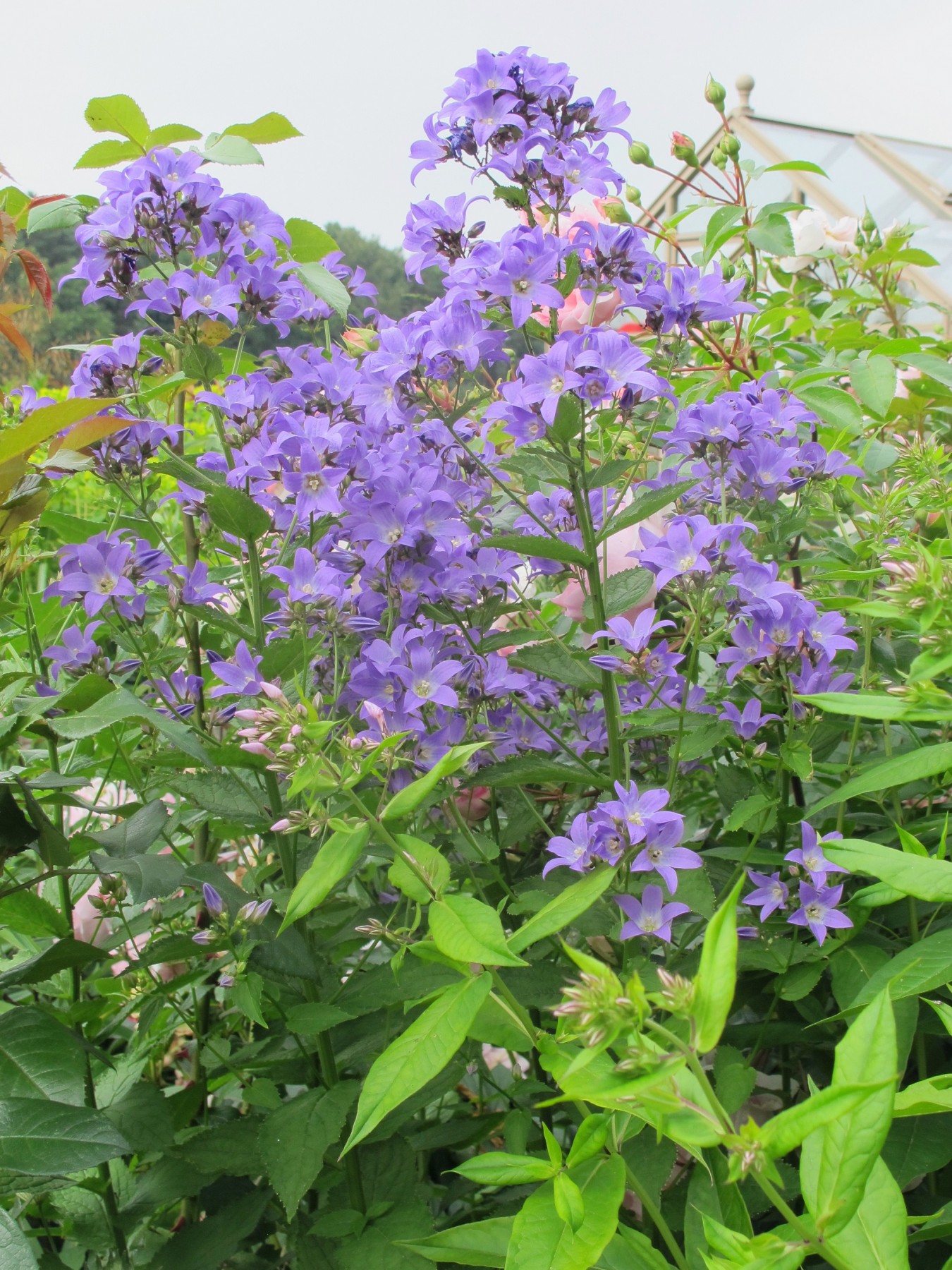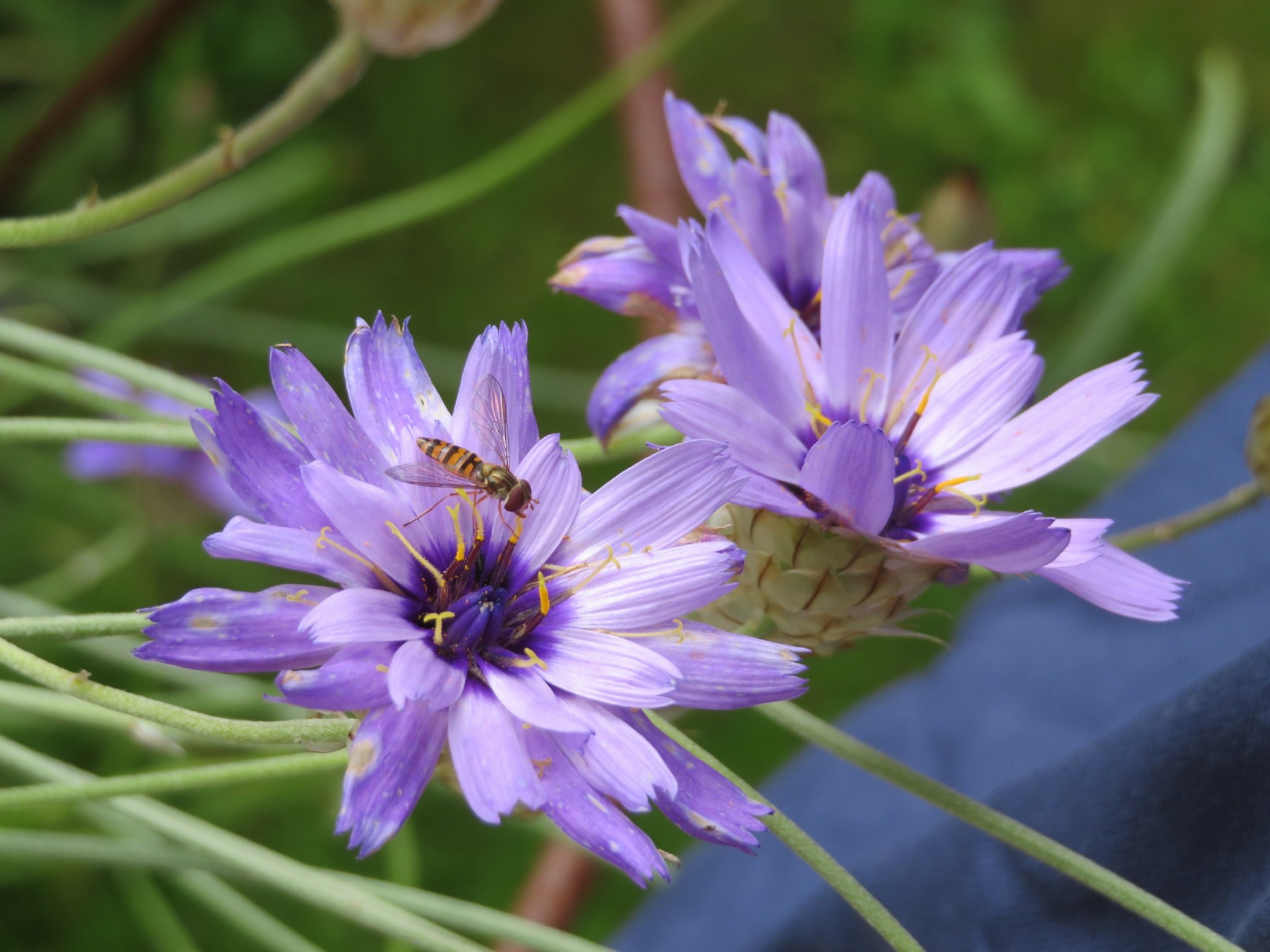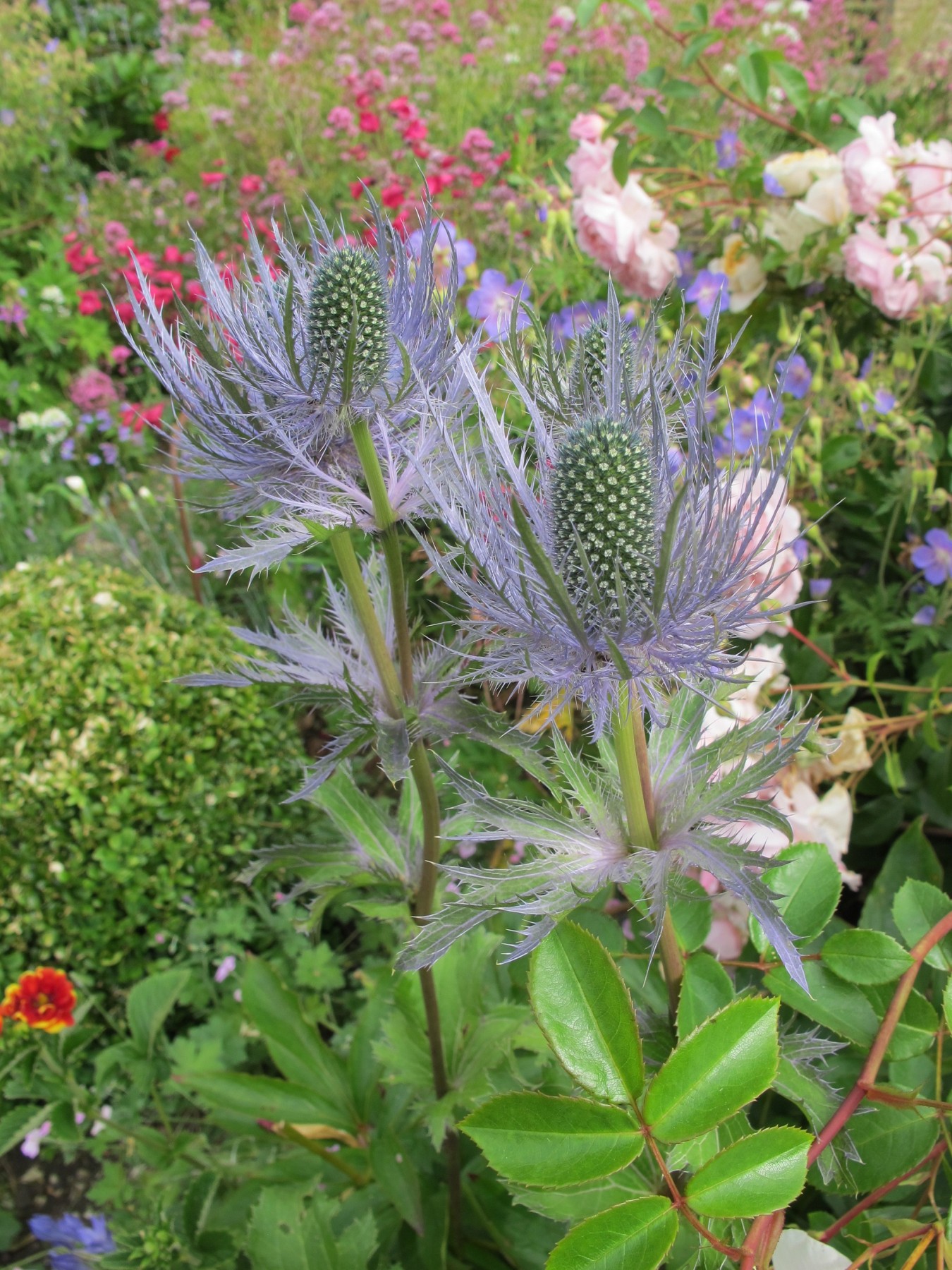
I don’t think I can ever remember such a glorious June because it’s been warm – even in the wonderfully named Cold Aston! It’s a blessing for me (and the plants) after such a long, cold winter and my roses have really appreciated it. They are better than they’ve ever been at Spring Cottage. Most of my roses are pastel colours, so they come in soft pinks and champagne whites. I have some orange-tinted roses too and some creamy yellows. Among my favourites are ‘Bonica’, ‘Champagne Moment’, ‘Wildeve’ and ‘Lark Ascending’. They’re all very healthy, an important consideration for an organic gardener. I can’t spray for black spot!
These roses follow on from my equally pastel peonies and this year the mid-pink ‘Monsieur Jules Elie’ has been a triumph. No other peony smells quite the same, a mixture of coconut ice and lily of the valley, and the slightly crimped, mid-pink petals always look silvery along the edges in good weather. Roses and peonies are mostly petal-packed and therefore offer nothing to the pollinators, so I make a huge effort to plant’s insect-friendly flowers close to them. Scabious, astrantias, single pinks, rock roses, alchemilla, stachys, lychnis, hemerocallis, and penstemons keep the pollinators happy.
The plants that really make an impact in this border are the strong blues though. They add vibrance and energy and stop the whole area from looking faded and wishy-washy, because we get bright, hard sunlight on top of the Cotswolds. Among the best is a tall campanula, or bell flower, with clusters of flower in the same sort of blue Cadbury’s milk chocolate’s wrapped in. It’s Campanula lactiflora ‘Prichard’s Variety’, an old variety from the famous, but long-gone Riverslea Nursery’s once based near Christchurch in Hampshire. This nursery also gave us Aconitum ‘Spark’s Variety’, another good source of blue.
Campanula ‘Prichard’s Variety’ must be a hundred years old now and the correct plant should be about a metre high with roundels of strong blue flowers, each with an almost silvery centre. Once the top flowers are finished it’s possible to deadhead them and create another flush at a lower level, so this is a very useful plant with roses because it gives weeks of flower. Indeed some gardeners Chelsea chop this campanula by almost half, so that it flowers appear after the first rose flush. I prefer mine to mingle with my roses. I don’t approve of rationing!
This campanula goes well close in the depths of the border and it can be repeat planted. You can pick up the same shade of blue with a summer-flowering bulb that’s as cheap as chips and really easy to grow. It’s rather like an emaciated agapanthus, but don’t be put off, for Triteleia laxa ‘Queen Fabiola’ is striking at the front of the border. It will return year after year without any maintenance and you could leave the papery seed heads. I prefer to pull them away gently before they release their black seeds. The term laxa does not mean floppy in this case, but it leans over the edge at an angle.
Not far away is a deep-blue herbaceous clematis is producing four-tepalled flowers that writhe like acrobats on a high wire. In full sun the tepals (not petals) acquire a silken sheen and this year, thanks to the lovely weather, there are equally silky, pale-green tassel-like seed heads. These herbaceous clematis are not grown nearly enough and they’re particularly useful close to roses because they almost scramble. They’re sold under the name of Clematis integrifolia and my best one is ‘Ozawa’s Blue’. Earlier in the year they enclose their upright, dark buds with upright leaves and these resemble partially inflated balloons. This plant is good in bud, flower and seed head. What greater accolade is there? I can’t get enough of these dark-blue herbaceous clematis and I try to shoe-horn in as many as I can, although they take a couple of years to shine.

Another plant I grow on the sunny side of borders is Cupid’s dart ( Catananche caerulea). I raised it from seed to start with, pricked it out and then planted it in early September. It flowered in the following year and it’s one of the easiest perennials to raise from seed. I’ve found it very hardy and I love the way the tall wiry stems are topped with silver-blue flowers consisting of tiers of petals. A dark-violet middle, decorated with a ring of minute pale-yellow stamens adds to the perfection of the plate-spinning plant. Perhaps the most perfect thing of all though is the bud, because this is a series of papery silver-white scales.
I’ve definitely got a thing about buds and I adore a substantial, mid-pink cornflower relative called Stemmacantha centauroides. Just before it flowers, it produces a mosque-shaped bud about two inches across and then the pink two inches across thistly flowers appear. I find myself stroking the papery scales every time I pass. I’m often disappointed when my echinaceas flower as well, because the buds are like a coronet.
This year’s hot summer has suited my perennial sea hollies, or eryngiums, and the stems, bracts and thistly thimbles have taken on an amethyst sheen and there are touches of lime sorbet on the thimbles and spiny bracts. As the day progresses and the light fades the colour darkens to thunder-blue. These are architectural plants that die down in winter and they shouldn’t be confused with the New World eryngiums with spiny evergreen foliage. These are perennial and they die down completely in winter. They need their own space to shine and they come in several forms.
The kindest to brush up against is Eryngium alpinum, because the bracts are feathery to the touch and touch you definitely will for these are tactile plants. This one can be difficult to place because the flowers tend to be mauve rather than blue. However there is an old hybrid called Eryngium x zabelii which is a cross between E. alpinum and E. bourgatii . Avondale Nursery, based on the outskirts of Coventry, are selling ‘Donard Variety’ and this has silver-grey, bowl-shaped flowers that you feel you could almost bounce over a badminton net. There’s also one called ‘Big Blue’, again from Avondale – although you’ll have to visit. They do have a display garden, but there’s no mail order.
A Yorkshire nursery, Dove Cottage near Halifax, has produced some stunning deep-blue seedlings including one sold as ‘Dove Cottage Hybrid’. One of their seedlings has been taken up by Hillier’s and was entered into the Chelsea Flower Show’s Garden Plant of the Year. It’s marketed under the name ‘Blue Waves’ and came third in the competition. The stem is inky blue and the huge, feathery flowers are a softer blue. Mine is in its first year but looking good although all these eryngiums improve with time. They colour up far more in hotter and drier summers.

Eryngiums have brilliant foliage and E. bourgatii, a plant introduced from the Pyrenees in 1731, has grey-green wisps of foliage topped by medium-sized flowers. It may not be as spectacular as some of the showy hybrids, but this can produce lots of flowering stems above a haze of prickly foliage. There is a fine blue form collected by Dr Ronald McKenzie, twenty or thirty years ago, and this is named ‘Picos Blue’. All eryngiums are bee magnets as well as steely plant sculptures.
The touch-paper colours, for steely blues that hover close to purple, are orange and yellow. I grow several yellow hemerocallis, or daylilies, but my favourite is a golden oldie called ‘Whichford’. It flowers at the same time as the eryngiums and the base of the foliage is shaded in black. The pallid-yellow flowers are a good size and I recommend it despite the fact that daylily buffs would prefer me to mention something far more modern and chromosome-packed.
A splash of orange doesn’t go amiss either, despite what the garden style police tell you, and some of the frilly summer-flowering potentillas lounge and loll about. Their casual stance seems to flatter the stand-to-attention sea hollies. My favourite is the deep-red ‘Volcan’, but the flowers tend to shrivel in hot sunshine. It’s also devilishly difficult to find. ‘Arc en Ciel’ combines light-green strawberry-like foliage and flouncy tomato-red flowers that have a glint of gold. They all look as though they’re wearing cancan skirts, or should that be flamenco dresses? After all the weather’s been more Spanish than British this summer.



